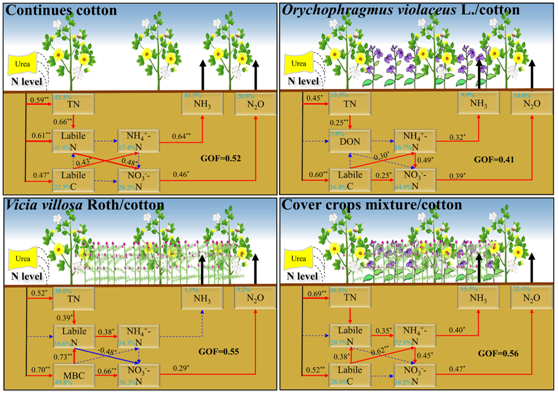- Location : Home» Newsroom
Study reveals theeffects mechanism of different types of green manure affecting soil gaseous nitrogen emission
Introducing cover crops in monocropping systems to improve soil health has been broadly adopted worldwide.However, the impacts of different cover cropping systems on soil emissions and related soil fractions and theirregulatory mechanism remain elusive.Recently, researchers from the Institute of Cotton Research, Chinese Academy of Agricultural Sciences conducted a study on the impacts of different types green manures on soil gaseous nitrogen emission. The results initially clarified the mechanism of different types of green manures affecting soil gaseous nitrogen emission in cotton fields and provided a theoretical basis for reducing greenhouse gas emission in cotton fields. Relevant research results were published in the Agriculture, Ecosystem & Environment.
As Professor Li Yabing introduced,both nitrogen fertilizer and legume-nonlegume green manure mixture increased soil ammonia and nitrous oxide emissions; cotton/non-legume green manure significantly reduced ammonia and nitrous oxide emissions by increasing soil microbial carbon and reducing soil labile nitrogen; cotton/legume green manure increased nitrous oxide emissions but reduced soil ammonia volatilization due to low soil C/N. This study provides novelinsights for green manure selection and cotton cropping system improvement, which will contribute to guiding significance for sustainable cotton production in the Yellow River Basin.
Dr. Zhang Zhenggui is the first author, and Professor Li Yabing and Associate Professor Wang Zhanbiao are the co-corresponding authors.The research was funded bythe National Key Researchand Development Plan of China, and the National Natural Science Foundation of China.
